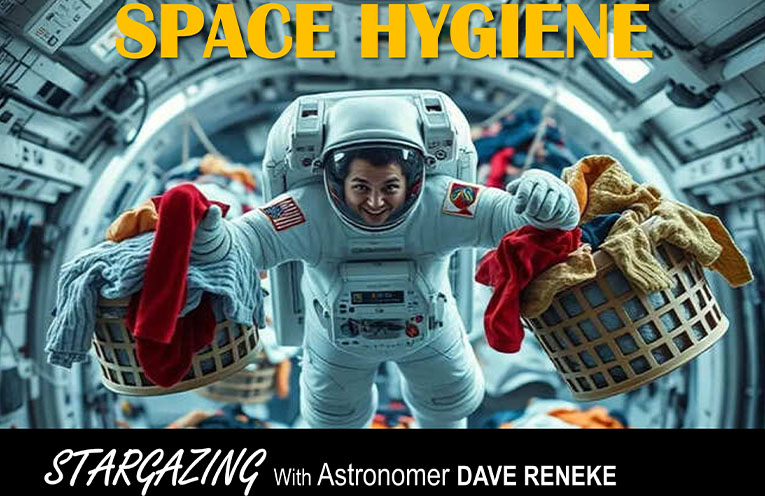SPARE a thought for the astronauts aboard the International Space Station (ISS).
They may float 400 kilometres above Earth at 28,000 km/h, eating their dinner out of pouches while gazing down at the swirling blue planet below – but they have one very down-to-earth problem: laundry.
Or rather, the complete lack of it.
That’s right. There is no laundry in space.
Not a single washing machine, not even a humble clothesline flapping in the solar breeze.
Water is far too precious to waste on a pair of socks, and detergent? Forget it.
Every drop of water aboard the ISS is recycled – including, yes, the astronauts’ own… contributions.
NASA calls it “yesterday’s coffee into tomorrow’s coffee.”
It’s a closed system.
So, the idea of pouring a few litres into a machine to wash gym shorts is, well, laughable.
Instead, astronauts wear their clothes – t-shirts, shorts, undies – over and over until they become too smelly or stiff to tolerate.
Then the clothes are bundled into waste capsules, like Northrop Grumman’s Cygnus or Russia’s Progress spacecraft. These trash ships eventually detach from the station and re-enter Earth’s atmosphere, where they burn up in a spectacular, if slightly pungent, fireball.
So, somewhere high above your head, last year’s astronaut underwear probably blazed a trail of glory before disappearing forever.
Of course, this raises the obvious question: what about hygiene?
If they’re not washing their clothes, how do astronauts wash themselves?
The answer is: very carefully.
With no showers or bathtubs in orbit, crew members rely on rinse-less wipes and no-rinse body wash – basically glorified baby wipes – to stay fresh.
Hair washing? A no-rinse, waterless shampoo that would make any music festival camper nod in approval.
And the laundry issue is only half the story.
Astronauts also wear special nappies – politely called “Maximum Absorbency Garments” – during spacewalks.
A spacewalk can last up to eight hours, and once you’re zipped inside that million-dollar spacesuit, bathroom breaks are not on the agenda.
These nappies are technological marvels, far removed from anything you’d buy at the local chemist, but still, the principle is the same.
You go, it absorbs, you carry on fixing the solar panels.
The surprise for many is how long a single set of clothes lasts.
A t-shirt might survive a week of workouts before being jettisoned to its fiery doom.
Socks? Maybe a little longer.
Underwear? NASA, in its infinite wisdom, leaves that decision to the wearer’s… discretion.
But here’s the kicker: scientists are now developing clothes that kill bacteria on contact or don’t smell at all, fabrics that could be worn for months without washing.
It’s all part of preparing for longer missions – to Mars, for example – where you can’t just toss your dirty laundry into the atmosphere.
Until then, astronauts will keep re-wearing, keep wiping down, and keep tossing their used clothes into the cosmic incinerator.
Space travel may be glamorous, but sometimes it stinks – literally.
You’re probably wondering about number ones and twos?
On the ISS, going to the loo is less “sit and relax” and more “strap in and aim carefully”.
Astronauts on the International Space Station use specially designed toilets with foot straps and thigh bars to stay in place. Urine is collected by a hose with gentle suction and processed into drinking water.
Solid waste goes into a small, lined container, sealed, and stored for disposal on cargo ships.
Everything relies on airflow, not gravity, to keep things tidy in microgravity conditions.
By Dave RENEKE, Astronomer



